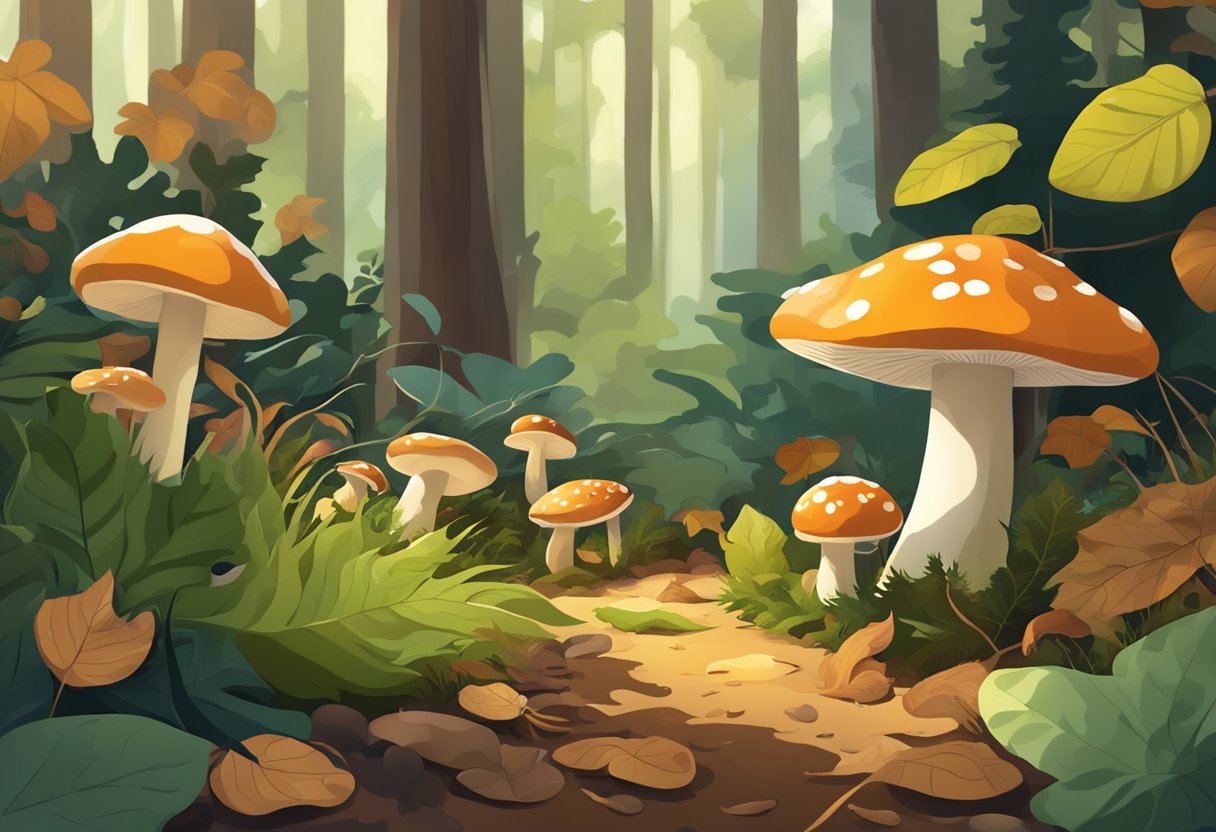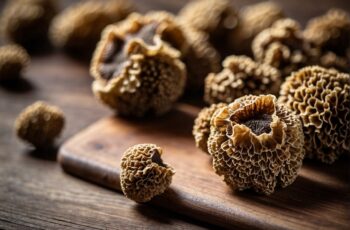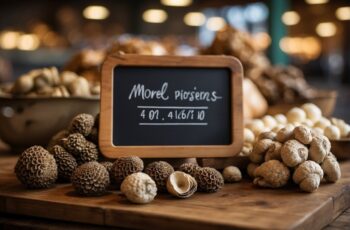Mushrooms offer a world of flavors and textures, making them a prized ingredient in diverse cuisines. Their unique taste profiles range from earthy and meaty to light and delicate. The availability of wild mushrooms, however, shifts with the seasons. Knowing the right time of year is crucial to finding the best varieties for your dishes.

With mushroom season peaking at various times, depending on the species and region, it’s important to be informed about which mushrooms are in season when. This ensures not only the best quality but also the safety, as picking wild mushrooms without proper knowledge can be risky. A mix of store-bought and foraged mushrooms, prepared with the right techniques, can elevate your cooking, bringing a touch of the wild to your table.
Key Takeaways
- Understanding mushroom seasons ensures the best flavor and safety.
- Proper preparation enhances mushroom dishes.
- Answering common questions demystifies mushroom cooking.
Essentials of Mushroom Selection and Preparation

When you’re selecting mushrooms, whether they’re wild or cultivated varieties, freshness is key. To ensure that you’re picking the best, look for mushrooms with a firm texture and a smooth appearance. Avoid those with any signs of sliminess or withering. Types of mushrooms such as shiitake, cremini, oyster, and portobello each have unique textures and flavors, but all should have a fresh, earthy smell.
| Wild Mushrooms | Cultivated Varieties |
|---|---|
| Morels | Shiitake |
| Chanterelles | Cremini |
| Porcini | Oyster |
| Hen of the woods | Portobello |
Once you’ve made your selection, proper storage is crucial to maintain freshness. Place your mushrooms in the refrigerator, ideally in a paper bag; this allows them to breathe and stay dry, as excess water can quickly degrade their quality.
Preparing mushrooms for cooking should be done with care; they are like sponges and will soak up any water they’re placed in. Clean them gently with a damp cloth or a brush. If you must rinse them, do so quickly and pat them dry immediately.
Finally, when it’s time to cook, mushrooms can be very versatile. Sautéing brings out their flavor and retains their texture. For the mushroom lover, exploring the distinctive taste of each variety can be a gratifying experience. Morels are excellent in sauces, shiitake mushrooms add a smoky flavor to stir-fries, cremini mushrooms are perfect for beef dishes, while oyster and portobello mushrooms can be enjoyed grilled or roasted for a meaty texture.
Mastering the Art of Mushroom Cooking
In this section, you will learn specific techniques to elevate your mushroom dishes, enhance their nutritional value, and incorporate them seamlessly into recipes.
Mushroom Cooking Techniques
Mushrooms are versatile in cooking, from simple sautéing to sophisticated roasting. Sauté mushrooms over high heat with a bit of olive oil, and they transform into a golden brown delight in just about 15 minutes. Use a wooden spoon to stir on the stove—this method intensifies the flavors especially well with varieties like cremini and shiitake. For Mastering the Art of Cooking Mushrooms: Techniques, consider roasting to create a deep, rich taste or steaming to preserve their earthiness while locking in nutrition.
Enhancing Flavor and Nutrition
To add umami or a savory taste to your mushrooms, consider seasoning with garlic powder, black pepper, and salt. Enhancing their natural flavors with fresh thyme, rosemary, or parsley will contribute complexity to any dish. For a touch of acidity, a spritz of lemon juice or a splash of balsamic vinegar can do wonders. Mushrooms are not only about flavor; they are packed with protein, fiber, iron, potassium, and vitamins while being low in calories, sugar, saturated fat, cholesterol, and sodium.
Recipe Integration and Serving Suggestions
Incorporating mushrooms into your recipes can be a game-changer. A mushroom risotto or mushroom pasta teeming with cheesy goodness and herbs is always a crowd-pleaser. Roasted mushrooms can complement a main course of chicken, pork, beef, or seafood, and they pair excellently as a side dish with asparagus, eggs, or potatoes. Try Skillet Mushrooms 101 for a quick guide on their integration. Store any leftovers in an airtight container and keep them in the refrigerator or freezer for later use. Remember, whether it’s mushrooms and onions over a baked potato or sautéed mushrooms as burger toppings, your creativity is the limit for a true mushroom lover.
Frequently Asked Questions
Exploring the world of mushrooms can lead to many queries, especially concerning their seasonality. This section addresses common questions about the timing and conditions for mushroom foraging.
What months are best for finding edible mushrooms in the Pacific Northwest?
In the Pacific Northwest, the prime months for foraging edible mushrooms are September through November. This is due to the cool, damp conditions that many wild mushrooms favor. Mushrooms thrive in the fall season’s mild temperatures and increased precipitation.
How does the season affect the types of mushrooms available?
Seasonality greatly influences the variety of wild mushrooms that can be foraged. Spring often brings morels, while late summer to fall is ideal for chanterelles and porcini. Each mushroom species has a specific growing season, depending on the local climate and ecosystem.
What is the peak season for hunting morel mushrooms?
The peak season for hunting morel mushrooms is springtime, typically from late March to May. Morels require warm soil temperatures and adequate moisture, which are conditions often met during the spring season.
Can you forage for mushrooms year-round in temperate climates?
Yes, you can forage for mushrooms year-round in many temperate climates. Some species, like the oyster mushrooms, can even be found in colder months. However, the variety and quantity of mushrooms may be limited compared to the peak seasons.
What is the best time of day for successful mushroom foraging?
Early morning is generally the best time of day for mushroom foraging. At this time, the temperature is cooler, and the evaporating dew can make mushrooms more visible. Also, foraging in the morning gives you a better chance of harvesting before other foragers or wildlife.
Do mushroom seasons vary significantly by state in the U.S.?
Yes, mushroom seasons can vary significantly by location within the U.S. due to varying climates and ecosystems. For example, the Southeast has different peak seasons compared to the Pacific Northwest. It’s important to research your local mushroom seasons to determine the best time for foraging in your area.


